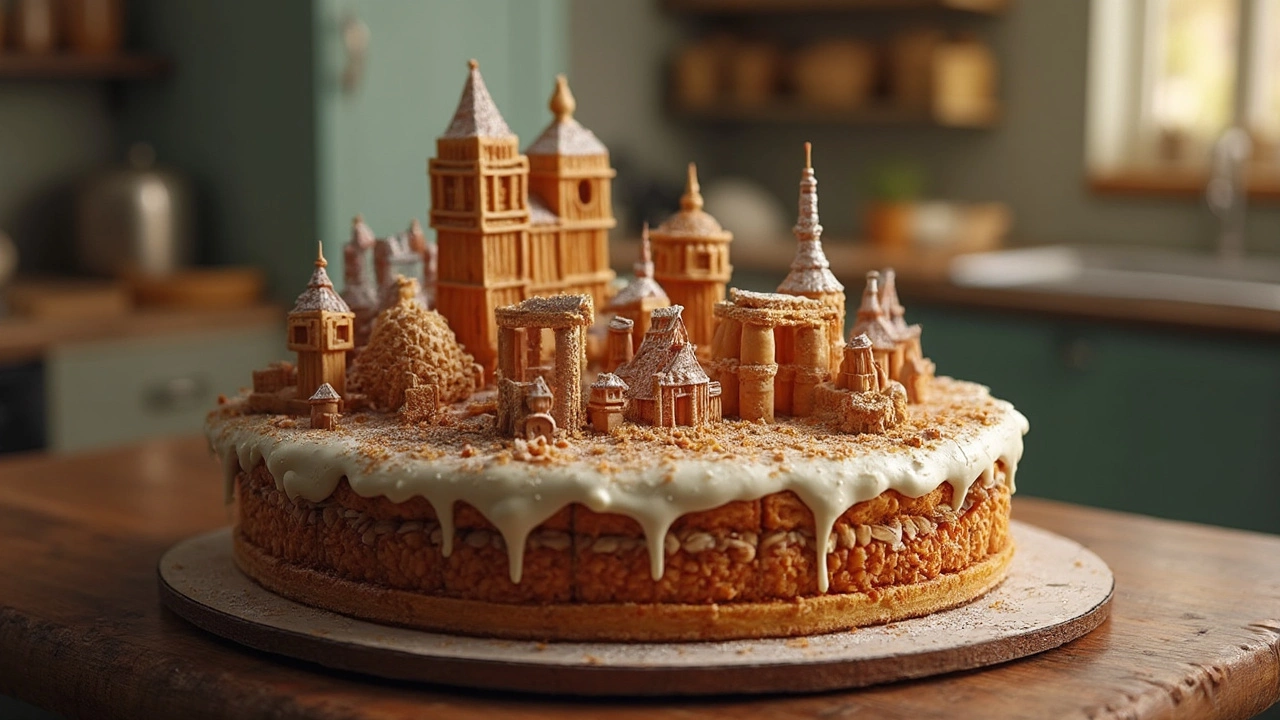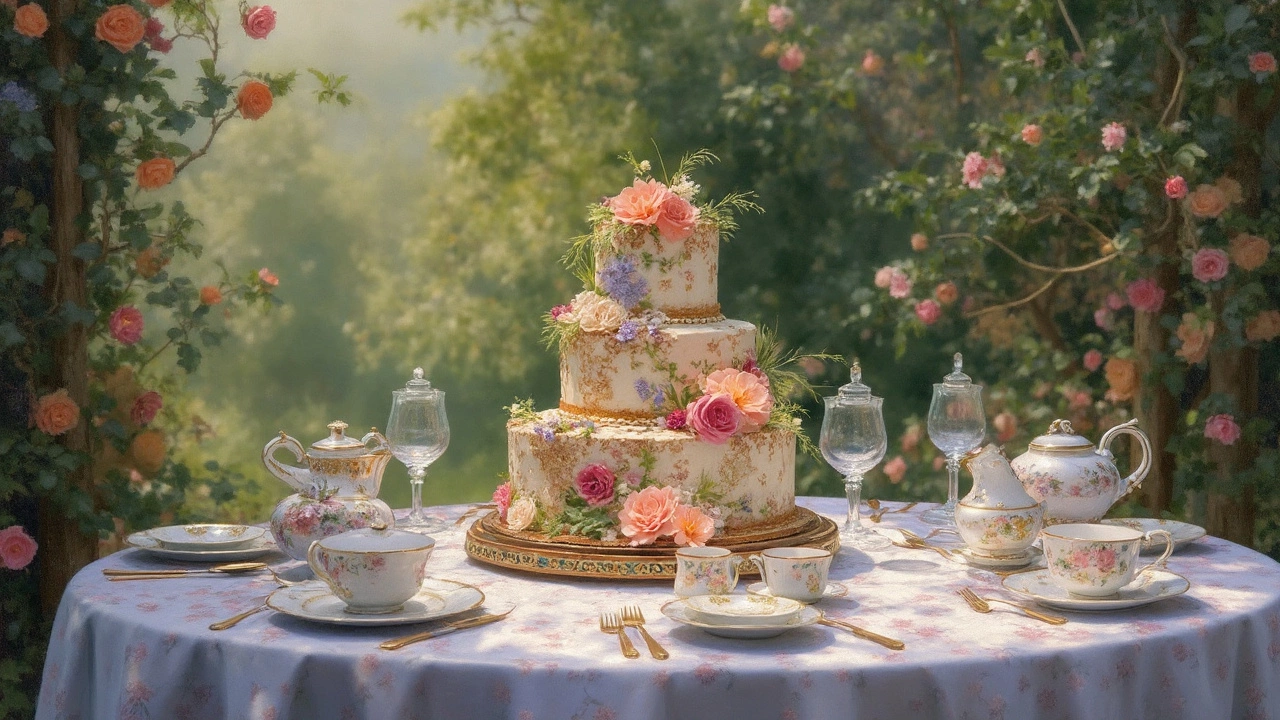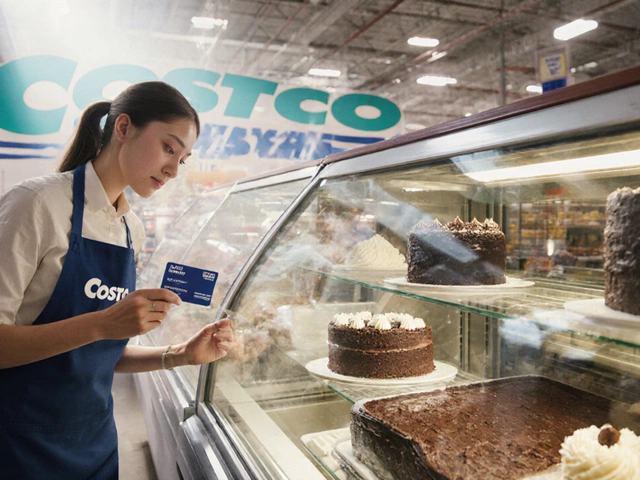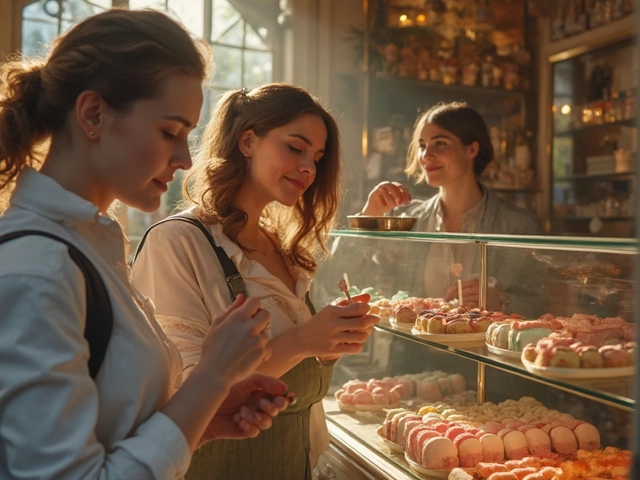When was the last time you came across a dessert that truly surprised you? Sure, we all love a good chocolate cake or even a classic vanilla, but there's an entire realm of cakes that push the boundaries of what we typically expect from our sweets. The concept of a 'rare' cake is fascinating because it doesn't just refer to scarcity. Think unusual ingredients, mysterious origins, and baking techniques passed down through generations like secret family heirlooms.
Take, for instance, the idea of incorporating flowers or spices you might not even recognize into a cake recipe. Sounds intriguing, right? As more adventurous palates search for something beyond the basic buttercream and sponge combo, these cakes have gained interest not just for their taste but for the stories behind them.
- The Concept of Rarity in Baking
- Unusual Ingredients in Rare Cakes
- Historical Stories of Unique Cakes
- Modern Takes on Exotic Desserts
- Tips for Finding Rare Cake Recipes
- Trying Your Hand at Baking One
The Concept of Rarity in Baking
In the world of baking, rarity isn't just about how often you come across a cake. It's about the distinct ingredients used, the unique preparation methods, and sometimes, the history interlinked with the creation. A cake can become a rare gem because it's made with a special ingredient that's hard to find, like saffron or those exotic spices locked away in your grandmother’s spice rack.
Rare cakes often have fascinating backgrounds. Ever heard of the Sacre Coeur Cake cherished in some French regions? It's known for its intricate rosewater and cardamom flavors, carrying secrets passed down through families for centuries. Then there's the Lapis Legit, or thousand-layer cake from Indonesia, flaunting its multi-layered beauty with rich spices like cinnamon and cloves.
Another factor adding to a cake's rarity is the technique. Some cakes require patience and precision that scare off the average baker. Consider an intricate technique like pulling sugar or creating delicate spun sugar decorations. These are almost an art form in themselves and contribute to making a cake truly unique.
Moreover, local festivals and regions often have specific rare cakes tied to them. In Japan, the Hanami Dango cake, with its mesmerizing pastel shades, graces cherry blossom festivals. It's rare in its seasonal approach, highlighting how cakes can also be tied to certain times of year or cultural celebrations.
So, when we talk about the rarest cake, we're not just referring to how hard it is to come by. We're delving deep into cultural tales, unusual ingredient lists, and techniques that make such cakes not only a delight for the taste buds but a story worth sharing.
Unusual Ingredients in Rare Cakes
Ever thought about adding an exotic twist to your cake creations? While cinnamon and vanilla might be the go-tos for most, the world of unique cake recipes opens up a pantry of possibilities that might surprise you.
For instance, have you ever heard of using matcha powder in cakes? This green tea, popular in Japanese culture, lends not just a vibrant color but also a distinct earthy flavor to cakes. Then there's saffron, often found in Persian cuisine, which adds a whimsical aroma and a golden hue, making your dessert feel like a treasure.
A more daring ingredient is black garlic. Known for its deep umami flavor, it brings a sweet, savory experience. And let’s not forget about hibiscus petals, which contribute a tartness that contrasts beautifully with the sweetness of cake. In fact, a quote from renowned chef Alex Atala says it best:
"Unfamiliar ingredients can turn an ordinary cake into an unforgettable experience."
If you’re feeling brave, why not try incorporating durian? Yes, the fruit known for its strong smell! It creates a rich, creamy texture thanks to its custard-like consistency.
Here’s a quick look at some intriguing ingredients used in rare cakes and the regions they hail from:
| Ingredient | Origin |
|---|---|
| Matcha Powder | Japan |
| Saffron | Iran |
| Fenugreek | India |
| Black Garlic | Korea |
| Lavender | Provence, France |
Experimenting with these ingredients might require a bit of culinary courage, but the payoff? Absolutely worth it! Who knows, your next cake might just be the start of a new rare dessert trend.
Historical Stories of Unique Cakes
The world of cakes is rife with legends and tales that are as rich as the flavors they celebrate. Let's jump back in time to uncover some fascinating historical stories of unique cakes that have made their mark.
One of the most notable historical cakes is the Linzer Torte, which hails from Austria. Known as the world's oldest cake recipe, it dates back to 1653. The recipe was discovered in the cookery book of Countess Anna Margarita Sagramosa. The Linzer Torte is famous for its lattice design and nutty, spicy flavor, a real treat for those who crave something out of the ordinary.
Another classic with an interesting backstory is the Panettone. Originating from Milan, Italy, this fruit-studded dome of sweetness became popular in the early 20th century as a Christmas staple. Legend has it that a young nobleman fell in love with a baker's daughter and created this enriched bread to win her heart. What started as a romantic gesture is now enjoyed in homes worldwide during the holiday season.
We can't talk about historical cakes without mentioning the Japanese Castella. Introduced to Japan by Portuguese merchants in the 16th century, this sponge cake became a favorite among the Nagasaki locals and is now a renowned delicacy across Japan. Its unique texture and flavor showcase how the fusion of cultures can create something extraordinary.
These stories aren't just about cake recipes; they're about cultural exchanges, historic events, and the personal stories of those who crafted these culinary masterpieces. Each cake, in its own way, connects us to a piece of the past, much like an edible time capsule.

Modern Takes on Exotic Desserts
With culinary trends shifting faster than you can say 'sugar rush,' today's bakers are constantly on the lookout for novel ideas. Why stick to an old routine when you can jazz things up with some exotic desserts? These aren't just about bizarre flavors but about merging cultures and creating something super yummy.
A standout example in the world of unique cakes is the Miso Caramel Cake. Miso, typically an ingredient in savory dishes, brings a surprising depth to sweets. The resulting cake has a sweet-salty balance that's hard to resist. Then there's the Black Sesame Matcha Cake, which combines earthy matcha with nutty sesame seeds, offering a rich, layered flavor profile that's become a cult favorite.
Nina Timm, a well-respected culinary expert, once said,
'The thrill of modern baking lies in its ability to break traditional boundaries and create something entirely unexpected and delightful.'It's true! Baking has become a playground where unusual combinations can lead to incredible results.
One emerging trend is using fermentation in desserts. Sounds weird? Think of Sourdough Cake. Using a sourdough starter, this cake has an intense yet delightful tangy taste, capturing the hearts of baking aficionados everywhere.
If you're itching to jump in and give one of these a go, start simple. Here's what you need to try a rarest cake recipe at home:
- Source unique ingredients from specialty stores or online platforms.
- Begin with a tested recipe. Blogs and social media often have great beginner-friendly options.
- Experiment within your comfort zone, maybe add a twist to a familiar recipe with an exotic flavor.
These modern takes are not just about food but the experience and stories they bring to your table. It's about stepping into a new world, one slice at a time.
Tips for Finding Rare Cake Recipes
So, you're on the hunt for the rarest cake recipes and don’t know where to start? No worries, you’re about to dive into some practical tips that will make your search much easier. Let’s be honest, finding unique cake recipes can be a bit like a culinary treasure hunt, but with the right resources, it's totally doable.
First off, the internet is your best friend. Websites dedicated to exotic desserts or international cuisine blogs are a goldmine. Check out platforms like Pinterest and Instagram where home bakers and pro chefs share their personal twists on recipes. Don’t miss out on recipe archives from renowned chefs who enjoy experimenting with exotic desserts.
Second, visit your local library or bookstore. Sometimes, older cookbooks contain hidden gems that haven't been explored by the mainstream. Keep an eye out for niche baking books focusing on world cakes, as they often include recipes unknown to many.
For a truly global experience, connect with online communities or forums. Places like Reddit or specialized Facebook groups allow you to chat with others who may have insights into rare cakes from different cultural backgrounds. You’d be surprised how a simple question can lead you to a recipe that’s treasured by someone across the globe.
Additionally, talking to the older generations is a treasure trove of knowledge. Consider asking a grandparent or a neighbor with a culinary flair. They might have recipe cards or memories that they’re willing to share, often encompassing those quintessentially rare family cakes.
- Use search terms like "uncommon cakes" or "heritage baking recipes" when browsing online.
- Attend baking workshops or classes focusing on world cuisines for hands-on learning.
- Subscribe to international cooking magazines that might feature these sought-after recipes in their issues.
Last but not least, don’t shy away from experimenting. Once you get your hands on some unique ingredients, try creating your version of a rare cake. Baking is as much about the journey as the destination, and you might even come up with a new family favorite!
Trying Your Hand at Baking One
If you’re feeling adventurous and want to create a cake that stands out, diving into the world of unique cake recipes can be thrilling. First up, let’s talk about gathering your ingredients. The ingredients list might look different from your usual shopping list, filled with rare spices, exotic fruits, and maybe even some floral infusions. Be sure to source fresh, high-quality items for the best flavor impact. Don't forget, some ingredients may require a trip to a specialty store or ordering online.
Once you have everything ready, it’s time to bake. Here’s a simple step-by-step guide:
- Preheat your oven: Set it to the temperature specified in your recipe, usually around 350°F (175°C).
- Prepare your baking pans: Line them with parchment paper or grease them well to prevent sticking.
- Mix dry ingredients: In one bowl, whisk together flour, baking powder, and any spices or dry flavor additions.
- Blend the wet ingredients: Use another bowl to combine eggs, sugar, oils, and any liquid flavors like extracts or floral waters.
- Combine: Slowly mix the wet ingredients into the dry until a smooth batter forms.
- Pour and bake: Pour the batter evenly into your prepared pans and bake until a skewer inserted in the center comes out clean.
- Cool and decorate: Allow to cool completely before adding any toppings or decorations. Get creative with things like edible flowers or unique frosting colors!
Baking a rare cake isn’t just about the outcome, it’s also about the journey and the fun in experimenting with flavors and techniques you’ve never tried before. It could be a learning process, resulting in a delightful exotic dessert that's sure to impress friends and family. Don't worry if it doesn't come out perfect on your first try; practice makes perfect!





